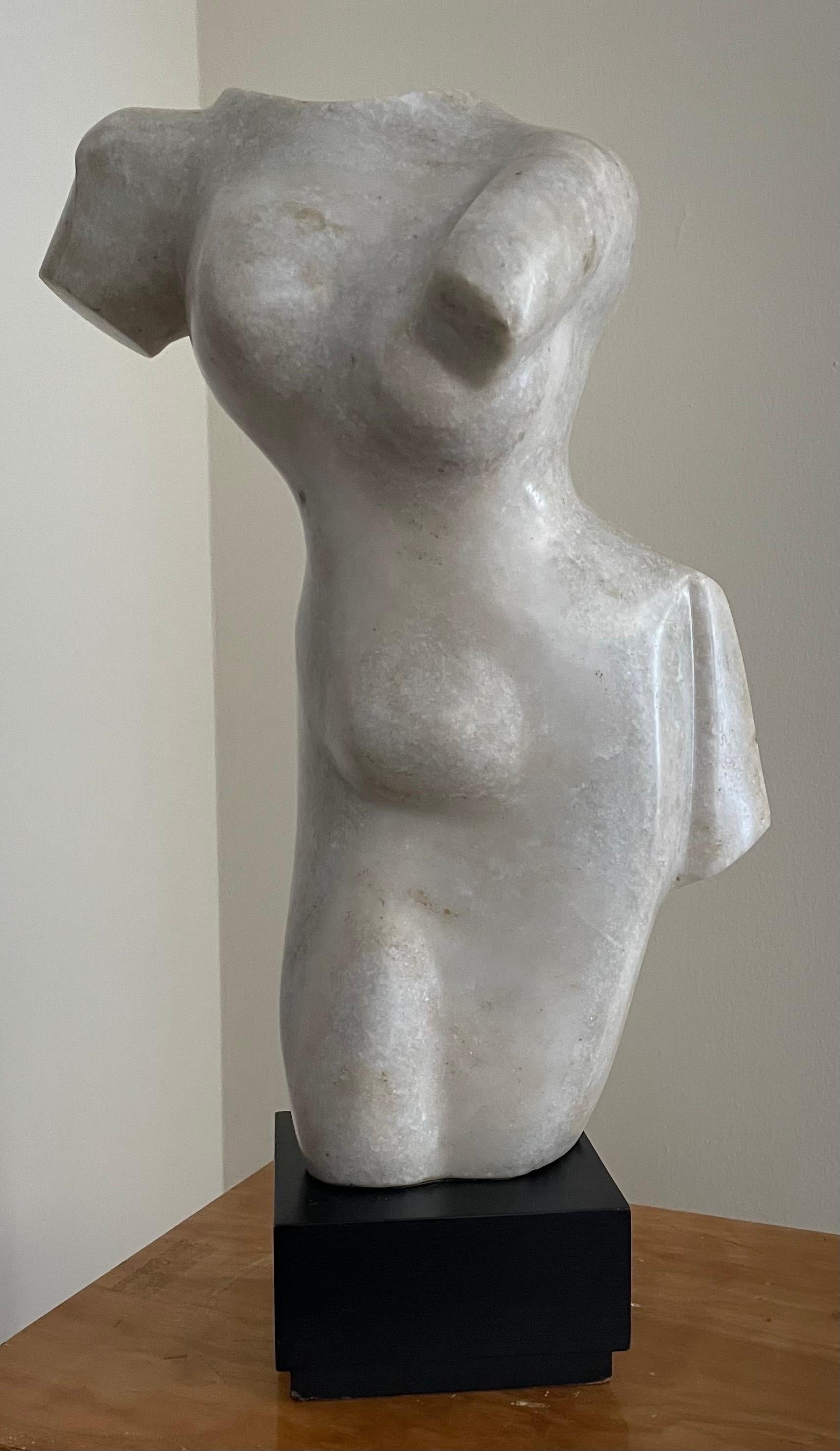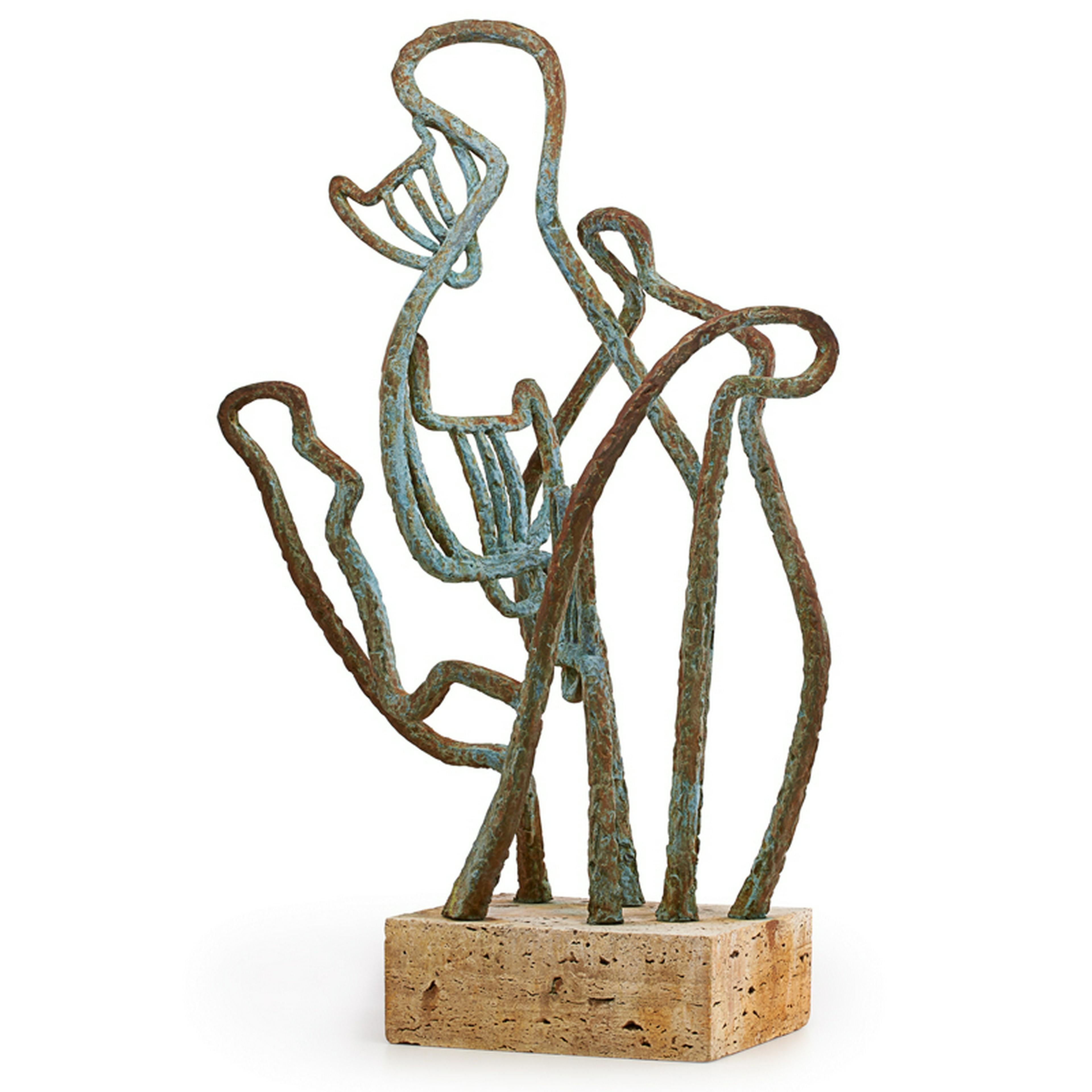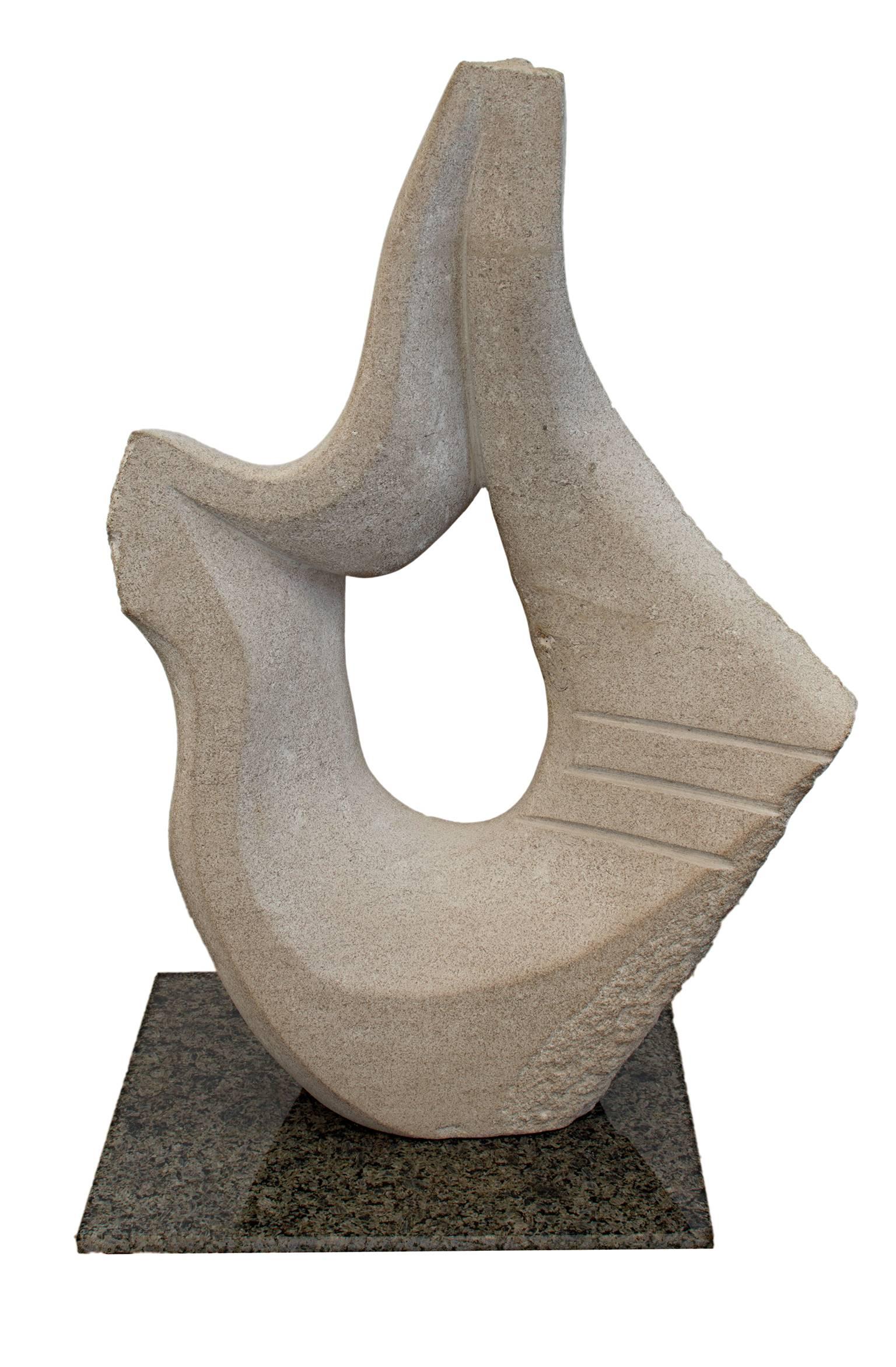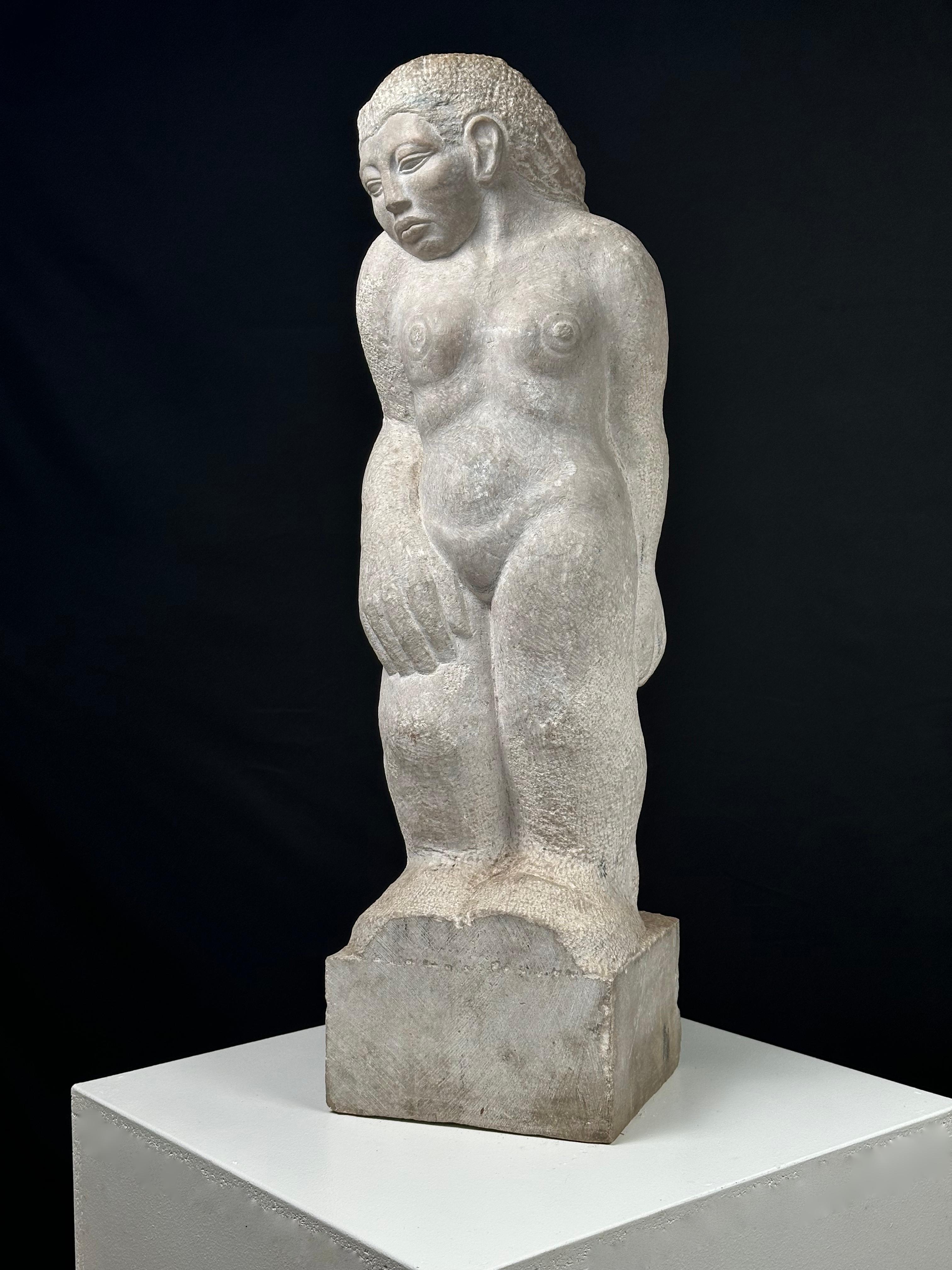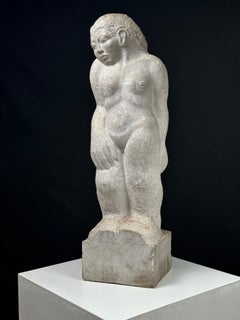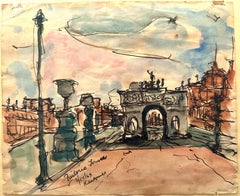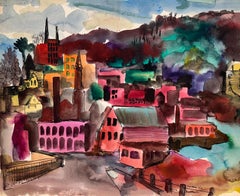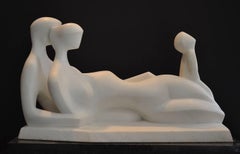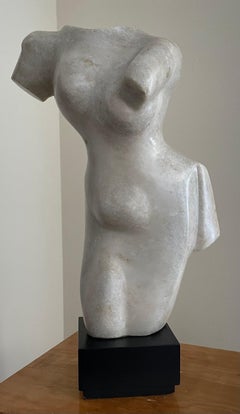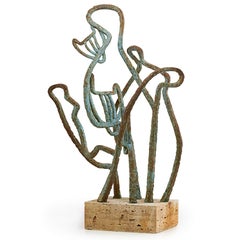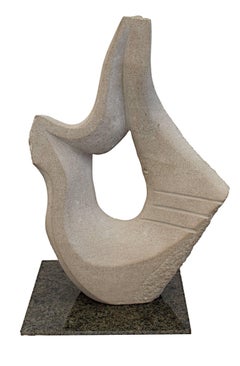Articles similaires à Cockerel (Rooster) Marble Sculpture
Vous voulez plus d'images ou de vidéos ?
Demander au vendeur plus d'images ou de vidéos
1 sur 20
Mark MorrisonCockerel (Rooster) Marble Sculptureca. 1950
ca. 1950
À propos de cet article
Mark Morrison (1895-1964)
Cockerel, ca. 1950
Carved and polished red Verona marble
4.25" wide, 8" deep, height is 22.25"
Provenance: Estate of Mrs. Mark Morrison.
Born:
Kingfisher, OK
Education:
University of Missouri
John Flannagan, mentoring and private instruction ca. 1940
Art Students League with William Zorach and Jose de Creeft
Exhibited:
Sculpture Guild Annuals
Audubon Artists Annuals
National Academy of Design Annuals
Pennsylvania Academy Annuals
Metropolitan Museum Artists for Victory, 1942.
Newark Fine Arts Museum
Whitney Annuals
International Exhibition, Fairmount Park, Phila. 1950
Nebraska Fine Arts
Metropolitan Museum Exhibition, 1951
Boston Arts Festival
National Sculpture Society Annuals
Memberships:
Sculpture Guild, Inc.
Audubon Artists
Awards:
Ellen Prince Speyer Award, N.A. 1950
Architects League of New York, Avery Award, 1958, 1959.
Museum Collections:
Metropolitan Museum of Art
National Academy of Design
Pennsylvania Academy of Fine Arts
Whitney Museum of American Art.
Museum of Fine Arts, University of Arizona
Mark Morrison began his life as a sculptor while nearing his professional retirement. In the late 1930s and into the 1940s, he like many of the younger artists in New York City availed himself to the great many academies, museums, teachers and mentors it offered. He studied with John Flannagan before his death, and then Jose de Creeft and Williams Zorach at the Art Students League. Having an attraction and aptitude for the ideas of the direct carving movement and good thorough craft, he took advantage of the growing public interest in a new American sculpture, and worked quickly to become a contemporary of his teachers. Through the 1950s, he exhibited with them, sold, entered competitions, and won awards. He was a sculptor with a sure hand, a head for academy, patience, and promise. Morrison died suddenly in October 1964 having had just married his second wife earlier the same year. Mrs. Mark Morrison would offer a small piece for one more exhibition with a Sculptors Guild in 1965. The work was never seen again until 2025.
Morrison was born on New Year’s Day in 1895 in Kingfisher, Oklahoma, a small rural city not yet a part of the Union. The only child of a Protestant minister, and one of only 16 that in 1913 would graduate from his high school in Higginsville, Missouri. He studied agriculture at the University of Missouri, at some point leaving to enlist in the army. He would reach the rank of Major. After the war, he married his first wife, moved to New York and began work for Tidewater Oil. He worked with them until 1954, retiring as a vice president. At the time he was living at 8 W. 13th St., his studio already set up in a corner of the basement in his apartment building.
The earliest exhibition on record for a work by Morrison was the Artists for Victory show at the Metropolitan Museum, 1942. Earlier the same year, John Flanagan committed suicide. The death was a terrible blow. Flannagan had been a profound influence, sharing both technical instruction and philosophical guidance. The importance of their friendship during the 1930's cannot be overemphasized. Morrison is part of Flannagan's artistic legacy, his only known pupil during the mythical sculptor's short life. Born in the same year of 1895, both artists came to NYC from rural regions of the US: Oklahoma and North Dakota respectively. In contrast to Morrison's stable life, Flannagan was a deeply troubled, difficult, impatient and unpredictable man. To have considered mentoring Morrison, his teacher must have seen a kindred spirit and artist of extraordinary potential. In turn, Morrison must have been a sympathetic and patient pupil who recognized the importance of overlooking personal shortcomings for the invaluable instruction of an artistic genius.
Morrison did not show regularly for almost 10 years spending this time educating himself, exhibiting here and there. He continued his sculpture studies at the Art Student League with Zorach and de Creeft, spending most nights working stones in his studio. His mature style would become clearly realized by 1950, a synthesis of the naïve and the sophisticated, what Flanagan called "the image in the rock", and the polished fluid marbles of Zorach.
Black Swan was featured in the Sculptors Guild exhibition "In Time and Place" at the Museum of Natural History in March 1952. And exhibit pushing those points in their mission to assist the public to fuller appreciation of sculpture, and that the sculpture and the architecture of buildings may again be planned simultaneous and homogeneously. Morrison's swan was the centerpiece of the modern living room designed by Earnshaw, Inc. In the same hall of the museum one year earlier Morrison and other members of the group demonstrated process at work in seven makeshift studios. He would continue to exhibit in Guild annuals and Audubon Artist annuals. His sculpture "Gosling" was given a special honorable mention from the Architects League in the Avery Competition of 1958, runner up to Zorach. In 1959, when he showed "Grasshopper" he won outright.
He had moved his studio to a larger more private space a few blocks away in Greenwich Village. By 1964 his work had become larger in scale, his groupings more challenging and lively, more considerate of light and the nature of the stone itself. He had lost weight and for a man of nearly 70 years old was in very good health. His death was unexpected and unfortunate, probably of a stroke . His legacy has survived, largely unknown until now in a small ranch in upstate New York.
- Créateur:Mark Morrison (1895 - 1964, Américain)
- Année de création:ca. 1950
- Dimensions:Hauteur : 56,52 cm (22,25 po)Largeur : 20,32 cm (8 po)Profondeur : 10,8 cm (4,25 po)
- Support:
- Mouvement et style:
- Période:
- État:
- Adresse de la galerie:Wilton Manors, FL
- Numéro de référence:1stDibs : LU245216317592
À propos du vendeur
4,9
Vendeur Platine
Vendeurs premium dont la note est supérieure à 4,7 et le délai de réponse de 24 heures maximum
Établi en 2007
Vendeur 1stDibs depuis 2015
397 ventes sur 1stDibs
Temps de réponse habituel : 3 heures
- ExpéditionRecherche du devis...Expédition depuis : Reading, PA
- Politique des retours
Certaines parties de cette page ont été traduites automatiquement. 1stDibs ne garantit pas l'exactitude des traductions. L'anglais est la langue par défaut de ce site web.
Garantie d'authenticité
Bien qu'il soit peu probable que la situation se présente, dans le cas où vous rencontreriez un problème d'authenticité d'un article, contactez-nous dans un délai d'un an pour obtenir un remboursement intégral. DétailsGarantie de remboursement
Si votre article n'est pas conforme à la description, est endommagé pendant le transport ou ne vous est pas livré, contactez-nous sous 7 jours pour obtenir un remboursement intégral. DétailsAnnulation sous 24 heures
Vous disposez d'un délai de 24 heures pour annuler votre achat sans motif.Des vendeurs professionnels agréés
Nos vendeurs de renommée mondiale doivent respecter des normes strictes en matière de service et de qualité, afin de préserver l'intégrité de nos fiches produit.Garantie d'alignement des prix
Si vous constatez qu'un autre vendeur a mis en vente le même article à un prix inférieur sur un autre site, nous nous alignerons sur ce prix.Livraison en toute confiance à l'international
Notre réseau de transporteurs de premier ordre propose des options d'expédition spécialisées dans le monde entier, y compris des livraisons personnalisées.Plus d'articles de ce vendeur
Tout afficherTête de femme
Mark Morrison (1895-1964)
Tête de femme , vers 1950
Pierre sculptée
7,75" de largeur, 9" de profondeur, hauteur de 20 7/8".
Signé à la base.
Provenance : Succession de Mme Mar...
Catégorie
Milieu du XXe siècle, Cubisme, Sculptures
Matériaux
Granit
12 000 $US
Lilith (Female Nude)
Mark Morrison (1895-1964)
Lilith (Nude Figure) , ca. 1950
Carved stone
8.25" wide, 7.25" deep, height is 28.75"
Provenance: Estate of Mrs. Mark Morrison.
Born:
Kingfisher, OK...
Catégorie
Milieu du XXe siècle, Cubisme, Sculptures
Matériaux
Granit
Jardin des Tuileries Louvre Paris
Joseph Kardonne (1911-1985). Jardin des Tuileries. 1965. Aquarelle sur papier, feuille mesurant 7,5 x 8 pouces collée à une feuille mesurant 8,5 x 11 pouces. Signé, daté et titré en ...
Catégorie
Milieu du XXe siècle, Cubisme, Peintures - Paysage
Matériaux
Aquarelle
240 $US Prix de vente
20 % de remise
Paysage industriel de Brattleboro, Vermont VT
Joseph Kardonne (1911-1985). Brattleboro, VT, 1969. Aquarelle sur papier, la feuille mesure 18 x 22 pouces. Mesure 22,5 x 26,5 pouces dans un cadre flottant personnalisé. Signé, dat...
Catégorie
Milieu du XXe siècle, Cubisme, Peintures - Paysage
Matériaux
Aquarelle
1 200 $US Prix de vente
40 % de remise
Portrait cubiste
Bernard Segal (1907-1986). Portrait cubiste, vers 1960. Gouache et aquarelle sur papier, la feuille mesure 10 x 13,5 pouces ; 12,25 x 15,25 pouces ...
Catégorie
Milieu du XXe siècle, Cubisme, Peintures - Abstrait
Matériaux
Papier, Gouache
Femme cubiste
Joseph Kardonne (1911-1985). Femme nue, 1966. Aquarelle sur papier, dimensions de la feuille 8 x 12.25 pouces. Signé, daté et titré en bas à droite. Excellent état.
Né à Newark, d...
Catégorie
Milieu du XXe siècle, Cubisme, Peintures - Abstrait
Matériaux
Aquarelle, Encre
Suggestions
Émergence
Par Robert Russin
C'est avec un grand plaisir que nous présentons les œuvres originales de l'artiste américain Robert Russin (1914-2007)
Robert Russin a commencé sa carrière en tant que sculpteur ...
Catégorie
années 1980, Cubisme, Sculptures - Figuratif
Matériaux
Marbre
Prix sur demande
Torse féminin
Par Leon Saulter
Né en Pologne le 31 mars 1908. Dans les années 1930, Saulter participe au Federal Art Project alors qu'il réside à Los Angeles.
Il y est décédé le 24 septembre 1986.
Expositions :...
Catégorie
années 1970, Cubisme, Sculptures - Abstrait
Matériaux
Marbre
1 425 $US Prix de vente
50 % de remise
Sculpture cubiste abstraite signée Cats, Chicago Bauhaus Femme moderniste
Cette annonce ne concerne que la sculpture. (la photo de l'annonce est pour référence et n'est pas incluse).
Marie Zoe Greene-Mercier était une artiste, écrivain et activiste artisti...
Catégorie
années 1960, Cubisme, Sculptures - Abstrait
Matériaux
Travertin, Bronze
« Guitar Player », pierre calcaire sculptée signée par Maureen Bergquist Gray
Par Maureen Bergquist Gray
"Guitar Player" est une sculpture en pierre calcaire de Maureen Bergquist Gray. À l'instar des cubistes du début du XXe siècle, Maureen abstrait la figure d'un guitariste en formes s...
Catégorie
années 1990, Cubisme, Sculptures
Matériaux
Calcaire
Nu féminin debout d'après Alexander Archipenko
Par Walt Kuhn
Illustration : "Walt Kuhn, Painter, His Life and Work", par Adams, page 67, planche 27, avec l'autorisation de Kennedy Galleries-Kuhn Estate (voir photo).
Les sculptures de Kuhn ont...
Catégorie
Années 1910, Cubisme, Sculptures - Figuratif
Matériaux
Bois
Plat espagnol avec plaque Toros Espagnol au Tor A.R. 403, Picasso
Par Pablo Picasso
Pablo Picasso A.R. 403
Plat espagnol avec toros
Plat Espagnol au Toros
1957
15.7" rond Edition de 100
Terre cuite rouge, décor émaillé, gravé au couteau, patiné noir. Dos décoré
La R...
Catégorie
Milieu du XXe siècle, Cubisme, Sculptures - Abstrait
Matériaux
Céramique

